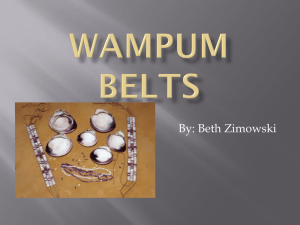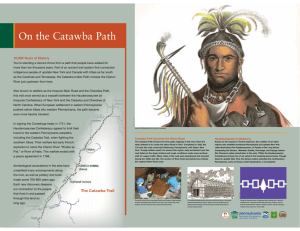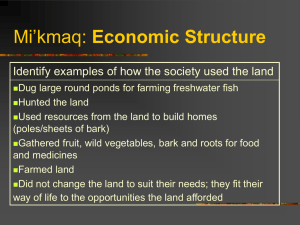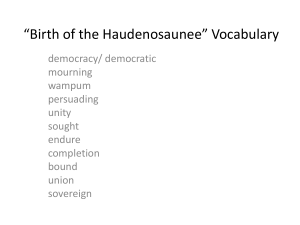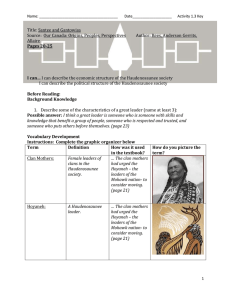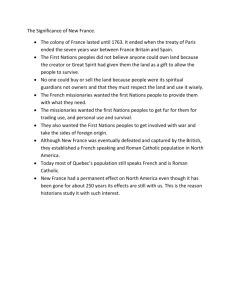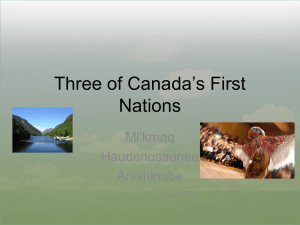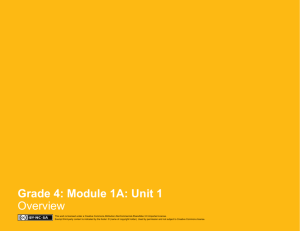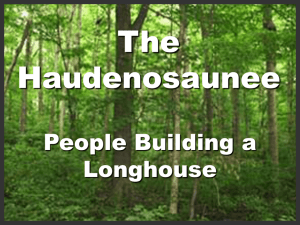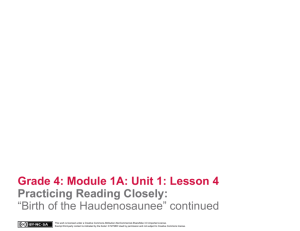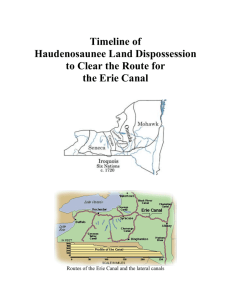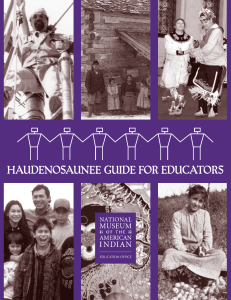Comments on Social Studies Framework
advertisement
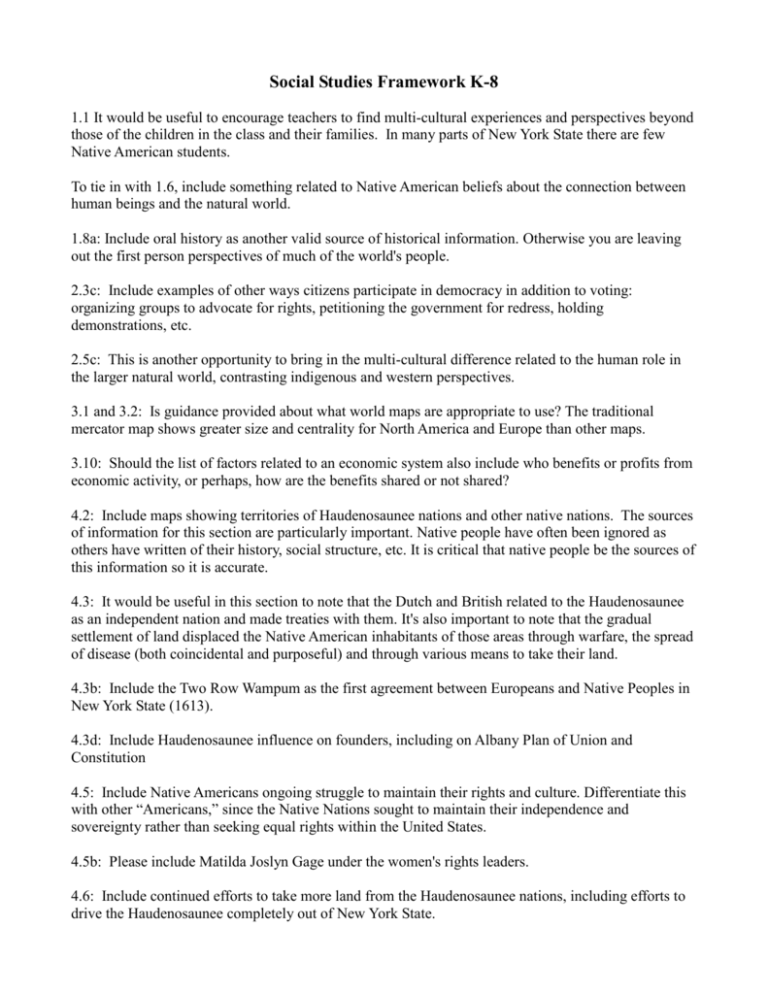
Social Studies Framework K-8 1.1 It would be useful to encourage teachers to find multi-cultural experiences and perspectives beyond those of the children in the class and their families. In many parts of New York State there are few Native American students. To tie in with 1.6, include something related to Native American beliefs about the connection between human beings and the natural world. 1.8a: Include oral history as another valid source of historical information. Otherwise you are leaving out the first person perspectives of much of the world's people. 2.3c: Include examples of other ways citizens participate in democracy in addition to voting: organizing groups to advocate for rights, petitioning the government for redress, holding demonstrations, etc. 2.5c: This is another opportunity to bring in the multi-cultural difference related to the human role in the larger natural world, contrasting indigenous and western perspectives. 3.1 and 3.2: Is guidance provided about what world maps are appropriate to use? The traditional mercator map shows greater size and centrality for North America and Europe than other maps. 3.10: Should the list of factors related to an economic system also include who benefits or profits from economic activity, or perhaps, how are the benefits shared or not shared? 4.2: Include maps showing territories of Haudenosaunee nations and other native nations. The sources of information for this section are particularly important. Native people have often been ignored as others have written of their history, social structure, etc. It is critical that native people be the sources of this information so it is accurate. 4.3: It would be useful in this section to note that the Dutch and British related to the Haudenosaunee as an independent nation and made treaties with them. It's also important to note that the gradual settlement of land displaced the Native American inhabitants of those areas through warfare, the spread of disease (both coincidental and purposeful) and through various means to take their land. 4.3b: Include the Two Row Wampum as the first agreement between Europeans and Native Peoples in New York State (1613). 4.3d: Include Haudenosaunee influence on founders, including on Albany Plan of Union and Constitution 4.5: Include Native Americans ongoing struggle to maintain their rights and culture. Differentiate this with other “Americans,” since the Native Nations sought to maintain their independence and sovereignty rather than seeking equal rights within the United States. 4.5b: Please include Matilda Joslyn Gage under the women's rights leaders. 4.6: Include continued efforts to take more land from the Haudenosaunee nations, including efforts to drive the Haudenosaunee completely out of New York State. 5.4a: It seems important to note that before Columbus most Europeans didn't believe the Americas existed, and thus the term “Indian” was used because Columbus thought he had arrived in India. Perhaps this is also a time to introduce perspective and consider looking at how the Native Americans viewed the European newcomers, rather than visa versa. 5.6b: Why not include other documents from elsewhere in the hemisphere, such as Bolivia's “Law of Mother Earth” which seeks to enshrine indigenous respect for the natural world into their legal structure. 5.6c: Differentiate the struggle of Native Americans, many of whom continue to maintain their status as independent and sovereign nations rather than seeking equal rights within the United States. 5.8: Colonial powers often imposed borders with no respect for the boundaries of the indigenous peoples who lived there. This can be brought in to broaden the discussion of differences and similarities in cultures. 6.2b: Include oral traditions of the people being studied as an additional source of knowledge about their history and background. 6.4: Include “indigenous spirituality” as an additional major “religion” while distinguishing it from the others as well. There are many similarities in basic spiritual values of indigenous peoples throughout the globe. 7.1: The sources of information for this section are again very important. Native people have often been ignored as others have written of their history, social structure, etc. It is critical that native people be the sources of this information so it is accurate. At this level, there can be discussion about viewpoint and perspective, who writes the history and what that means. 7.2: It would be useful to bring in the “Doctrine of Discovery” as the moral and legal justification for the European conquest of Native peoples and territory. At this age, it is appropriate to talk more directly about what happened in the “encounters” between Native Americans and Europeans. 7.2d: Include the Two Row Wampum agreement between the Haudenosaunee and the Dutch per above. 7.3c: Include the Haudenosaunee and other native peoples as inspirations for a democratic, free society in addition to European sources. 7.4: Include Haudenosaunee influence on the founders in the development of the Albany Plan of Union and the Constitution. 7.5: As part of identifying the Constitution as a living document, identify both its democratic strengths and shortcomings in creating democracy for all peoples. 7.7: Include the ongoing Native American efforts to retain their existing lands, regain lands taken illegally and maintain their cultural and spiritual rights under the list of efforts Reform Movements 8.2d: Include Native resistance to federal “Indian” policies of assimilation as well as western encroachment of territory. Social Studies Framework 9-12 9.8: It seems quite arbitrary to group together Africa and the Americas like this. Is there a logical reason for doing so? 9.8b: Why not also include the Maya and Haudenosaunee for additional diversity? 9.10a: Include the “Doctrine of Discovery” as the moral and legal justification for the European conquest of Native peoples and territory in the Americas, Africa and elsewhere. 9.10c: Perhaps instead of “collapse of the indigenous populations” use decimation? Make it clear that many Native nations continued despite the loss of population and land. 10.2: Include the influence of Native American ways of life, governments and social structures on efforts for equality, freedom and democracy by US founders and women's rights movement 10.11c: Include the role of indigenous peoples in supporting and inspiring movements for environmental protection. 11.1: Include the “Doctrine of Discovery” as the moral and legal justification for the European conquest of Native peoples and territory in the Americas. 11.2: Include mention of Haudenosaunee influence on founders, Albany Plan of Union and Constitution. Note that under Article 6, “all Treaties made, or which shall be made, under the Authority of the United States, shall be the supreme Law of the Land.” The United States signed hundreds of treaties with independent Native American Nations beginning with a 1778 Treaty with the Delaware. While these treaties recognized the sovereignty of the native nations, the United States and its state and local governments have not lived up to these treaties. 11.3 and 11.4: Without the decimation of native nations and the taking of their land, the United States could not have grown. Include efforts to make their spiritual practices illegal. Provide detail about the boarding school experience. 11.5c: It would be useful to identify ways that the various social movements supported and inspired one another, including people who were active in multiple movements. 12.G1: Include Haudenosaunee as an additional source of inspiration and guidance for the founders of United States. 12.G4: Include more information on social movements/citizen activism and important components of effective democracy.
